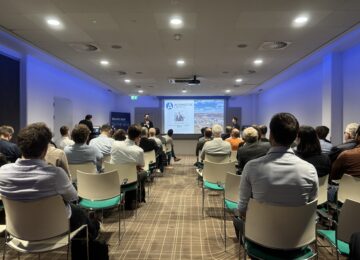Towards net-positive incorporation of energy storage
I have an aversion to the English word intermittent, often used in the context of wind and solar power generation. The definition "something that appears or occurs intermittently" reminds me of a flashing fluorescent bar, when it's not nearly as bad. I prefer the term variable renewable energy (vre).
Price volatility
The Netherlands is a vre leader. Partly because we have no non-variable - i.e. switchable - renewable energy sources such as hydropower and do not want biomass. Because wind and solar power generate electricity, the sustainability of our electricity grid in particular is going like a rocket so far. Between 2010 and 2023, the share of renewable electricity rose from 10 to 50 percent. In some weeks, two-thirds of our electricity comes from renewable sources. This growth of vre leads to increasing price volatility in the electricity market.
Not paying
In both the day-ahead market and the imbalance market, prices are fanning out; very low, negative prices or, on the contrary, extremely high prices are becoming more frequent. Negative prices coincide with periods of high vre production. This led to Vandebron now charging households with solar panels monthly fees. Moreover, at these times we are increasingly seeing curtailment - cutting off or switching off solar panel inverters and turning wind turbine blades out of the wind. This is understandable; a power producer would rather not pay to produce electricity. But it does not promote the energy transition. This renewable generation is needed to make the second half of our electricity system and the rest of our energy system more sustainable.
Offside
The Netherlands wants all of its electricity consumption to come from renewable sources by 2035. The second half of that race has begun, but our vanguard is increasingly out of the game. The strategy of the first half no longer works; we need to switch - phase out subsidizing renewable energy production, starting with the net-metering scheme. Instead, we must ensure that investments in energy flexibility can go ahead, including by charging a fair price for connection to the grid when energy is stored.
Push Along
In the future, the time of energy production and consumption in particular will determine the fee you receive or the price you pay. This also applies to grid operators' tariffs. If you use the grid to charge an energy storage system during high demand and off-take congestion, you will pay a higher rate than if you avoid these peak times. Grid operators also increasingly have to make significant investments to enable feed-in of renewable generation, often deep into the grid. It makes sense that when there is generation congestion, they would impose restrictions on discharging batteries and instead reward charging. That way, batteries can push along instead of against. A battery should be a solution, not a problem. Grid-neutral integration in which a battery is sidelined is insufficient: we must move towards grid-positive integration of energy storage.
Significantly faster
An investment in flexible assets and energy storage becomes more attractive due to increasing price volatility. At the same time, increased capacity of flexible energy provides a stabilizing effect on price volatility. In the latest edition of the "Security of Supply Monitoring," TenneT assumes 10.2 gigawatts of battery capacity in 2030 under current policies, in addition to 10.8 gigawatts of interconnection capacity. What the balance between the supply of vre and energy flexibility will look like in the future is unknown. Currently, the rollout of solar[1]pv and offshore wind is estimated to be several thousand megawatts per year. This is considerably faster than energy flexibility investments, which now amount to several hon[1]thirds megawatts. With that, I expect price volatility to continue for some time to come. But if nothing is done about ever-rising grid tariffs, energy storage won't happen anyway. Peace-growth requires flexibility and a different incentive for the energy transition than has been the case so far, promoting flexibility including energy storage is needed to make our vanguard - wind and solar generation - more possible.
Robert Kleiburg
Board member Energy Storage NL
Chairman working group 'Better Business Case'
Source: Storage Magazine





